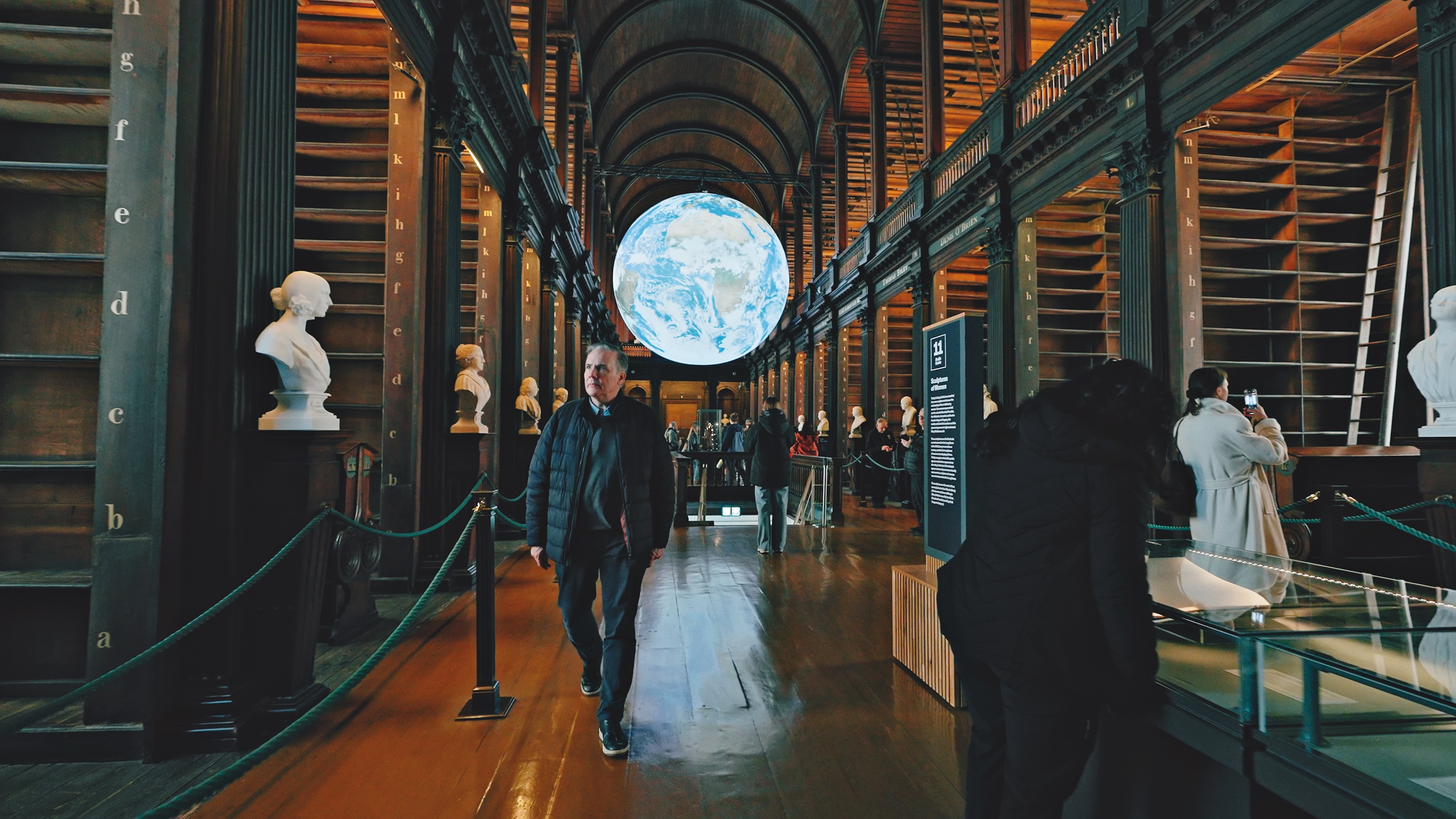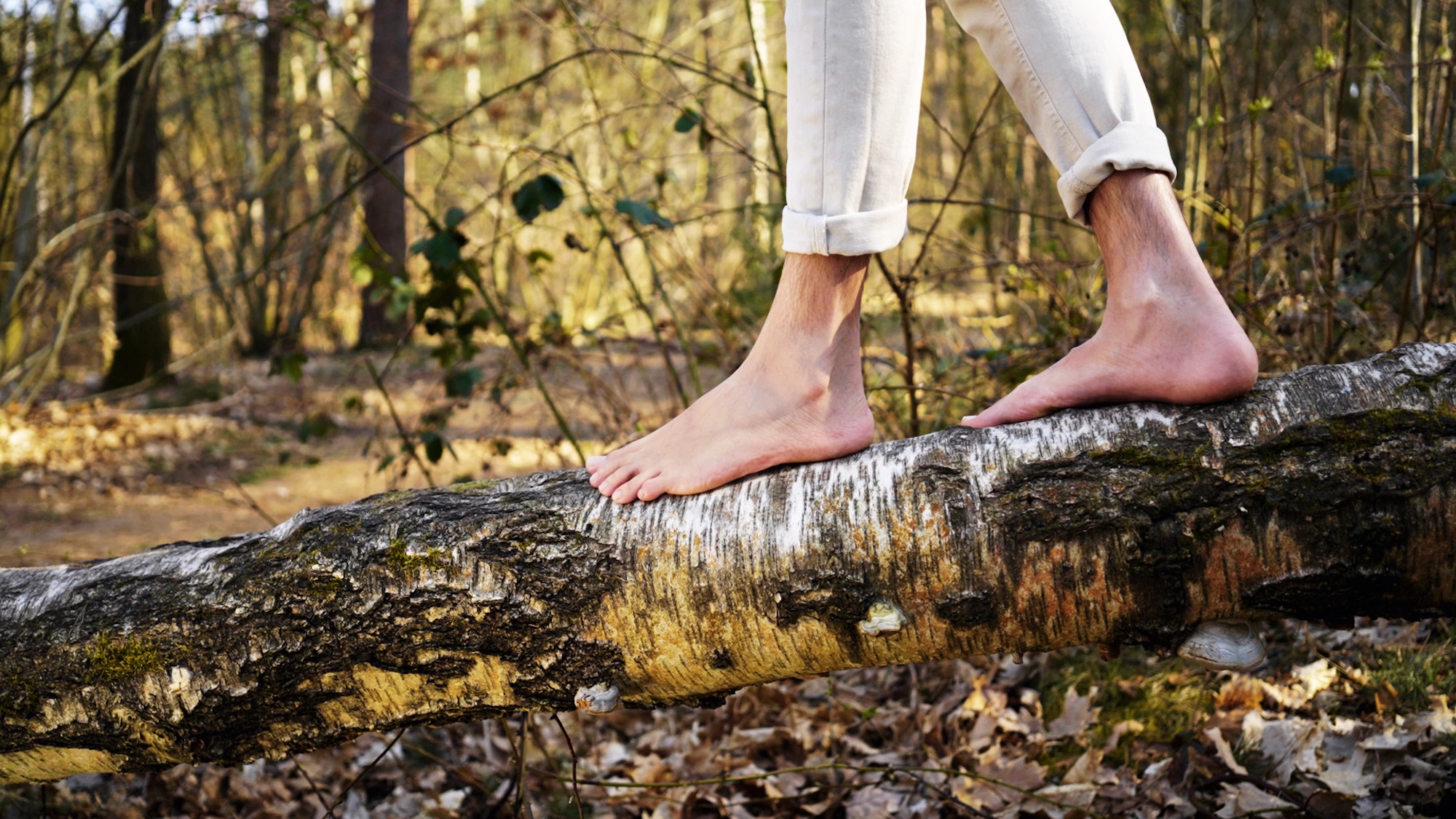Interview Shane O'Mara
Shane O'Mara is a professor of Experimental Brain Research and a member of the academic staff of the School of Psychology at Trinity College in Dublin, Ireland. His academic research focuses on the brain systems that support learning and memory, and how they are influenced by stress and depression. He often explains his work by saying he seeks to understand how “the brain meets the world.” He has published more than 150 peer-reviewed papers since 1993 in leading international journals and wrote a book titled “In Praise of Walking,” which has been translated into around 25 languages, including Korean and Chinese.
How would you describe your work?
I'm really interested in understanding how the brain meets the world. I try to understand how we can do things and how the world affects how our brain works. I’ve been focused on this since I was a postgraduate student at Oxford in the early 1990s.
How difficult is it for humans to learn to walk?
Humans naturally learn to walk as part of an unfolding genetic program, without explicit instruction. Unlike many other species, we take longer to develop the ability to walk, primary due to our large brains, which require extensive input and environmental interaction over time. Infants instinctively progress through stages – crawling, sitting, pulling themselves up, and eventually walking – when given the right conditions.
This prolonged developmental period is a key feature of human infancy. Unlike animals such as giraffes, which must walk immediately to escape predators, human babies are born into a social environment where they are cared for and protected for years. This extended dependency allows for significant brain development, which enables complex cognitive, motor, and social skills that distinguish humans from other species, including chimpanzees.
Walking on two feet is a unique human adaptation that offers significant advantages, but it requires both physical readiness and brain development. Our bodies and nervous systems have evolved to support bipedal movement, and although the process takes time, children naturally teach themselves how to walk. Over months, they experiment, fall, get back up, and gradually master the skill without major injury. Those who couldn’t adapt did not survive, shaping the genetic program that enables modern humans to walk. In the end, while we may be slow to start, this extended learning period is crucial for our overall development and intelligence.
Do people walk less now than in the past?
Yes, people walk less today compared to the past. Studies show that in the 1800s, working men in London typically walked 10 to 12 kilometers per day. In modern mechanized societies, however, the average is between 3 to 4 kilometers per day. In non-mechanized societies in Africa and South America, men walk around 16,000 to 18,000 steps per day, while women typically walk 10,000 to 14,000 steps.
Humans are naturally adapted to walk long distances. For example, when people take long pilgrimages which span hundreds of kilometers, they may experience blisters initially, but after a few days, they can then walk 15 to 20 kilometers a day without much difficulty. This proves that we're capable of walking long distance over extended periods without significant injury.
Has evolution created larger brains also for movement?
The connection between our brains and movement is fascinating but difficult to fully comprehend. One theory, known as the motor-centric theory of brain development, suggests our brains evolved to help us move in the world. If you consider a fundamental divide in the living world, it’s between those that can move and those that can’t. Plants don’t move and lack brains, whereas motile species, like humans, have brains. This raises an intriguing question: Are there animals that are motile during part of their life cycle but non-motile at other stages, or vice versa? The answer, surprisingly, is yes.
Take the sea cucumber, for example. It is motile during its early life cycle and has a spinal cord. However, as it matures, it attaches itself to a rock and ingests its own nervous system because it no longer needs to move.
In contrast, jellyfish offer a reverse case. In their polyp stage, while attached to a rock, they don’t have a nervous system. But as they transition to their mobile stage, they develop a nerve net, which allows them to move, escape predators and seek prey. This demonstrates that the presence of a brain is closely tied to the ability to move.
So a brain needs movement and movement needs a brain?
Yes, there is a deeply intertwined relationship between the two. Human movement has always been closely linked to survival, especially when it comes to sourcing and conserving energy. In early human history, we needed to find food while ensuring that the energy spent in the process didn’t exceed what we gained from eating. Movement levels varied based on food availability – people were active when hunting or gathering, but during times of scarcity, they conserved energy.
In modern times, however, our larger brains have enabled us to create abundant food sources that are easily accessible, which has lessened the need for movement to survive. Many jobs today are sedentary. This shift has brought about new challenges as we now tend to consume far more calories than we burn through movement.
Movement also plays a significant role in cognition. Ancient Greek philosophers recognized the connection between walking and thinking. Modern research continues to explore this relationship, suggesting that walking can enhance brain function and supports intellectual and creative processes.
Is there research showing that walking has an influence on our creativity?
Walking has long been associated with creativity. Renowned thinkers like Immanuel Kant and Bertrand Russell often strolled to stimulate their thoughts. Recent studies confirm that walking boosts creative problem-solving. A brief walk before tackling complex problems can significantly enhance idea generation.
Moreover, walking maintains overall energy and focus. Prolonged sitting can be fatiguing as it reduces circulation, while walking activates the vestibular system and prepares the body for action. Research by Dr. Chuck Hillman at the University of Illinois shows that just 20 minutes of walking can improve brain function.
For children, walking to school is linked to better academic performance, due to increased physical activity, social interaction, and environmental engagement. However, it’s crucial to ensure safe, low-pollution walking routes to maximize these benefits. In modern society where convenience often takes precedence, walking is often overlooked in favor of more efficient alternatives, but walking remains a fundamental and beneficial activity for both physical and cognitive well-being.
Are there any more benefits of walking?
Walking offers numerous benefits beyond physical health. It fosters social connections, which are crucial for mental well-being. When walking with others, breathing and step lengths naturally synchronize, deepening bonds. From a mental-health perspective, physical activity lowers the risk of depression and anxiety. Even individuals with these conditions find that walking accelerates recovery.
The social aspect of walking, especially during meaningful conversations, enhances well-being. This aligns with the practice of "social prescribing," where doctors encourage walking and other activities as part of treatment plans. Walking helps regulate blood sugar, improves heart health, and complements other treatments, like those for hypertension.
Ultimately, walking isn’t just a form of exercise; it’s essential for nurturing social bonds. Unlike running, which is difficult to sustain over long distances, walking is something we can do every day with relative ease. It’s a practice that has sustained us throughout evolution and remains vital to our health.
Is walking becoming more difficult for us today?
Walking is influenced by our environment. If walking is the only option available, we will walk, but city and building designs play a significant role in whether walking remains a natural part of daily life. When architects prioritize human movement, they can create spaces that encourage walking, promoting healthier lifestyles instead of sedentary ones.
Many people say that we need to walk 10,000 steps per day. Do you agree?
I think that's too many. The 10,000-step rule is a marketing creation from a Japanese company selling pedometers in the 1960s, not a scientifically-backed benchmark. Research suggests walking between 5,000 and 7,500 steps daily can lower mortality by about 30%. In non-mechanized societies, where daily step counts are often reach 10,000 to 15,000, an 80-year-old will have a heart health of a 50-year-old in a Western mechanized society. It proves that movement is good for you. Instead of cramming all steps into a single long walk, it's more effective to spread walks throughout the day in shorter bursts – about 2,000 to 3,000 steps at a time. Movement is essential, but we need urban planning and workplace designs that prioritize mobility for everyone, regardless of age or ability.
Are there cities already designing with this in mind?
Yes, cities like Dublin, Paris, and New York are creating environments that promote walking. Dublin has improved accessibility, with crosswalks and footpaths for those with mobility challenges. Paris is working on its “15-minute city” initiative, reducing car traffic to ensure essential services are within walking or biking distance. New York's broad sidewalks make pedestrian movement easier. These cities are prioritizing pedestrian-friendly designs to enhance safety and encourage walking.
Which is actually better, walking or running?
It depends on your goal. While running is great for cardiovascular health, walking is more practical for everyday activities like carrying groceries or a child. Walking also offers unique benefits in social interactions, making it easier to have conversations or connect with others. Each has its place depending on what you're trying to achieve.





